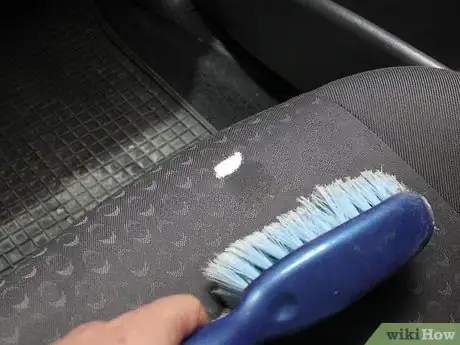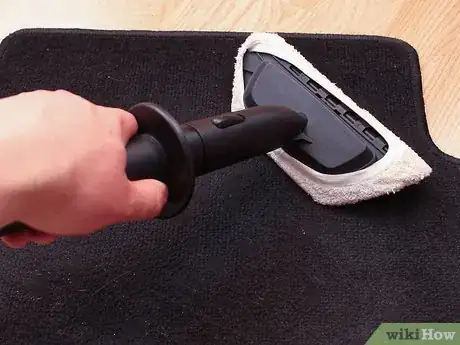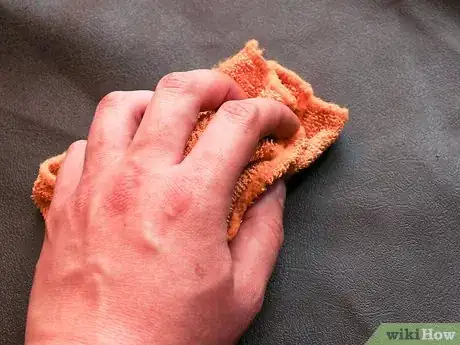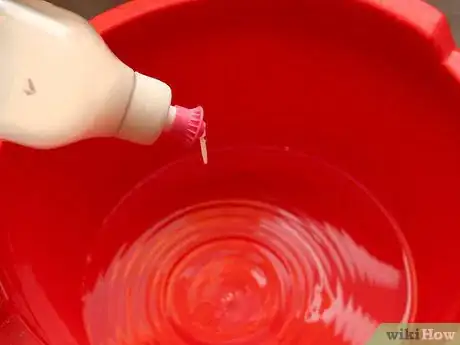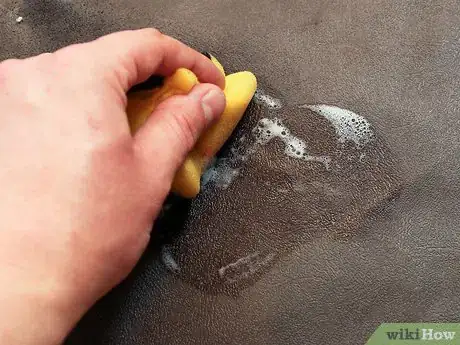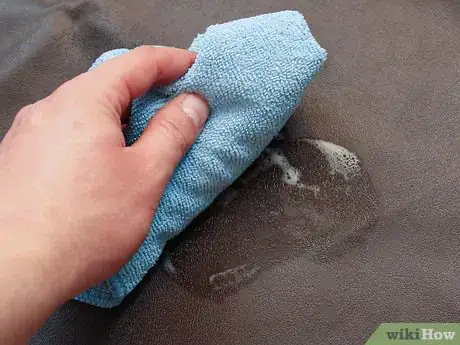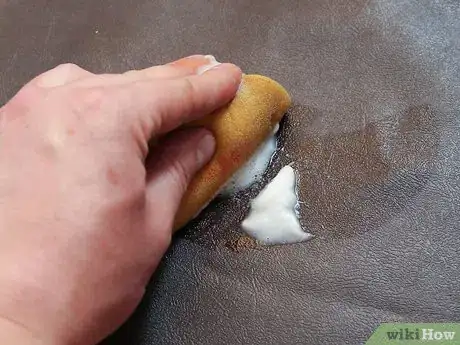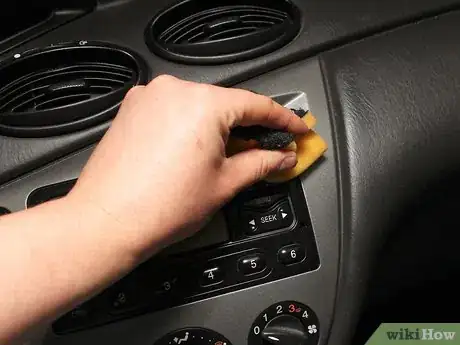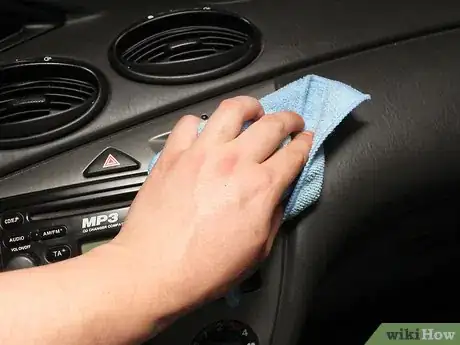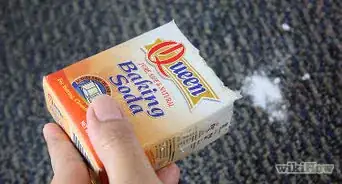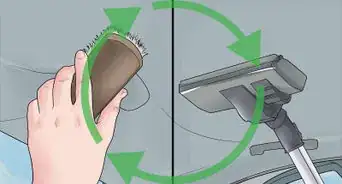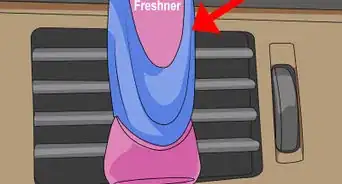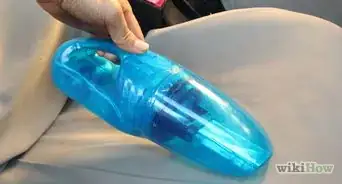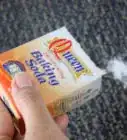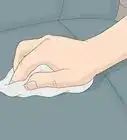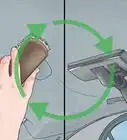This article was co-authored by Chad Zani. Chad Zani is the Director of Franchising at Detail Garage, an automotive detailing company with locations around the U.S. and Sweden. Chad is based in the Los Angeles, California area and uses his passion for auto detailing to teach others how to do so as he grows his company nationwide.
This article has been viewed 481,080 times.
If you stepped in oil or grease and left stains inside your vehicle (or maybe you were a little careless when working on your vehicle), you'll need to remove the stain as soon as possible. Though oil and grease are slightly different, there are a few common techniques that work to remove stains left by either. These techniques can be tweaked and altered by using different brands or slightly different cleaners, but you will essentially either steam clean, wash, dissolve, or absorb the oils that are staining your car. It often takes a combination of these techniques.
Steps
Cleaning Oil and Grease Stains from Carpet and Cloth Seats
-
1Understand the enemy. Whether you rubbed oil or grease on your interior ultimately doesn’t matter for cleanup purposes. Here’s why:
- Oils are defined as any compounds that are insoluble in water, soluble in organic solvents (non-polar things like gasoline), and liquid at room temperature.[1]
- Grease, on the other hand, is simply an oil that has additives to make it semi-solid (kind of like Jell-O) at room temperature. These additives are solid and do not absorb into the surfaces inside your car.[2]
- This means that, once you scrape off any excess contaminants from the surface of your interior, the stain left behind is an oil stain.
- Cleaning oil from cloth seats requires the same process you would use to clean it from carpet.[3]
-
2Scrape off any excess oil or grease. You can use a paint scraper, spoon, or knife. It doesn’t matter if you use metal or plastic, but be cautious not to puncture your seat.Advertisement
-
3Blot the stain. This will remove any residual oil or grease that is left sitting on the surface of your interior. Use a dry paper towel or shop towel to do this.
-
4Apply baking soda to the stain. This will soak up the oil. Allow the baking soda to sit for 10-15 minutes.[4]
-
5Remove the baking soda. You can vacuum it up with a shopvac or sweep it up. If there is a large amount of oil, you might put more baking soda on the stain and repeat this cycle several times.[5]
-
6Clean the carpet with dry cleaning solvent if residual stains remain. If there is any stain left, you can repeat the process as long as you continue to see improvement. Instructions for sponging and blotting with a particular dry cleaner will be included on the manufacturer's bottle. Once you can no longer tell that this method is making a difference, you should move on to another method.[6]
-
7Scrub with a degreaser. A detergent such as Dawn is often enough to break up oil stains, especially fresh ones. You can also buy other over the counter grease/oil removers such as Goo Gone. This is the most common and straightforward way to remove a grease or oil stain.[7]
-
8Steam the stained area. If a degreaser didn’t knock out the stain, you may need to use steam to coax it out. The steam will heat the fibers of your carpet and open up any pores in the fiber. This allows the carpet to “release” any trapped oil and gives you the chance to soak it up.
- You can use a traditional steam cleaner to do this job.
- If you do not have a steam cleaner, you can place a brown paper bag over the stain to absorb the oils. Then, apply steam by putting a clothing iron on top of the bag to create the heat and steam to free the oils.[8]
Removing Grease and Oil from Leather with Degreaser
-
1Remove excess grease or oil from the surface of your leather. Scraping and blotting steps above to make sure that you get as much grease/oil off of the surface before trying to clean it.
-
2Mix a degreasing solution. Most commonly, this will mean adding a dish detergent such as Dawn to warm water and agitating to mix. You can also buy other over the counter grease/oil removers specific to leather. This is the most common and straightforward way to remove a grease or oil stain.
-
3Clean the affected area. Thoroughly scrub the affected spot with your degreasing solution and a microfiber towel or rag. If you notice any of the color of your leather transfer onto the rag, stop immediately and allow the area to dry before resuming.
-
4Use a wet towel to remove the cleaner. Again, distilled water is best for this, but tap water will work. Be sure that no lather or soapy residue is left behind. The soapy residue will collect dirt.[9]
Removing Grease and Oil from Leather with Baking Soda
-
1Mix up a baking soda paste. If the degreaser alone didn’t work, or you feel you need to deodorize a bit, you can mix ⅜ cup of warm water, 1 tablespoon of baking soda, ½ teaspoon of flour, and ⅛ cup of sea salt to make a cleaning paste. Add all of the ingredients to a bowl and mix until you have a paste.
-
2Scrub the affected area with your paste. The baking soda paste provides a bit more friction than most degreasers. This can help if you have a stain that requires a lot of scrubbing. Use a rag, or preferably a microfiber towel, to scrub the paste into the affected spot. If it is a small spot, or a spot with a lot of crevices you can use a toothbrush to better scrub the area.
-
3Remove the paste with a wet towel. Use a wet towel or microfiber towel to wipe away the cleaning solution and the grease. For this you need only use water, distilled water is best as it contains fewer contaminants that might leave water spots.
-
4Repeat this process. If the stain isn’t completely removed after the first cleaning, repeat this process until the stain is gone.
Removing Grease and Oil from Plastic
-
1Follow the step above for mixing a degreasing solution. This should be treated similarly to the leather. Do not use a thinner or stripper such as toluene or lacquer thinner. This can damage your plastic.
-
2Choose a sponge or scrub brush. Be sure that the sponge or brush bristles are not so coarse that they will scratch your plastic. A toothbrush can be used for small or hard to reach areas.
-
3Scrub the area. Dip your chosen cleaning utensil into the solution and get to scrubbing. If you work up a leather, you can wipe it away with a paper towel or other rag.
-
4Do a final wipe with distilled water. If you do not have distilled water, tap water will work. This step will remove the cleaners and any oils that they lifted from the surface of your plastic.
Expert Q&A
Did you know you can get expert answers for this article?
Unlock expert answers by supporting wikiHow
-
QuestionWhat is the easiest way to remove grease?
 Chad ZaniChad Zani is the Director of Franchising at Detail Garage, an automotive detailing company with locations around the U.S. and Sweden. Chad is based in the Los Angeles, California area and uses his passion for auto detailing to teach others how to do so as he grows his company nationwide.
Chad ZaniChad Zani is the Director of Franchising at Detail Garage, an automotive detailing company with locations around the U.S. and Sweden. Chad is based in the Los Angeles, California area and uses his passion for auto detailing to teach others how to do so as he grows his company nationwide.
Auto Detailing Expert
-
QuestionCan I use baking soda on my leather seat to remove the peanut butter that I used to remove gum?
 Community AnswerYou should have no problem removing peanut butter from a leather seat -- it's easy to wipe it off. You might see excess oil there, which you could deal with by oiling your seats like you should regularly anyway.
Community AnswerYou should have no problem removing peanut butter from a leather seat -- it's easy to wipe it off. You might see excess oil there, which you could deal with by oiling your seats like you should regularly anyway. -
QuestionI put a hot dish of food on my leather car seats and it left a slight ring where the dish was, did I damage the leather? If so, can I repair it?
 Community AnswerTry folding a damp towel several times, placing it on the seat, and warming it with an iron. I assume that you have already applied leather conditioners and/or Neatsfoot oil. If not, try that first. Do not iron the leather directly.
Community AnswerTry folding a damp towel several times, placing it on the seat, and warming it with an iron. I assume that you have already applied leather conditioners and/or Neatsfoot oil. If not, try that first. Do not iron the leather directly.
Warnings
- Use solvents and cleaners in a well ventilated area.⧼thumbs_response⧽
- Some stains may not come clean.⧼thumbs_response⧽
- Do not put undiluted detergent on any of these surfaces. It will likely leave a film that attracts dirt and is difficult to remove.[11]⧼thumbs_response⧽
Things You'll Need
- Table knife, metal paint scraper or plastic spoon
- Grease-cutting liquid dish detergent
- Dry paper towel
- Sponge or cloth
- Baking soda
- Dry cleaning solvent
- Steam cleaner (or brown paper sack and iron)
- Bucket or bowl
References
- ↑ http://www.oxforddictionaries.com/us/definition/american_english/oil
- ↑ http://www.machinerylubrication.com/Read/1352/grease-basics
- ↑ http://www.stain-removal-101.com/oil-stain-removal.html
- ↑ http://web.extension.illinois.edu/stain/staindetail.cfm?ID=173
- ↑ http://www.stain-removal-101.com/oil-stain-removal.html
- ↑ http://www.stain-removal-101.com/oil-stain-removal.html
- ↑ http://www.stain-removal-101.com/oil-stain-removal.html
- ↑ http://www.geeksoncars.com/how_1557_remove-grease-oil.html
- ↑ http://www.howtocleanstuff.net/how-to-remove-motor-oil-from-plastic-vehicle-moldings/
About This Article
To get grease and oil out of your car’s fabric upholstery, scrape away as much of the stain as possible with a paint scraper, knife, or spoon. Then, blot the area with a dry paper towel or shop cloth. Sprinkle a little baking soda on the stain and let it sit there for 10-15 minutes. Sweep the baking soda away or clean it up with a shop vac. If there’s still any remaining oil or grease, use a dry-cleaning solvent or a gentle degreaser, such as liquid dish soap, to blot or scrub it away. For stubborn stains, try steaming the area with a steam cleaner to soften up the oil or grease, then go over it again with a degreaser. If your upholstery is leather or plastic, wipe away excess oil or grease with a cloth or carefully scrape it off the surface with a paint scraper. Then, wipe the area with a soft rag or sponge dipped in a solution of dish detergent and water. Wipe away the soapy residue with a clean, damp cloth or towel. For extra stubborn stains on leather, mix up a paste of 3/8 of a cup (89 mL) of water, 1 tablespoon (15 g) of baking soda, half a teaspoon (1 g) of flour, and 1/8 cup (36 g) of sea salt. Gently scrub the stain with the paste, then wipe the area clean with a damp cloth.




